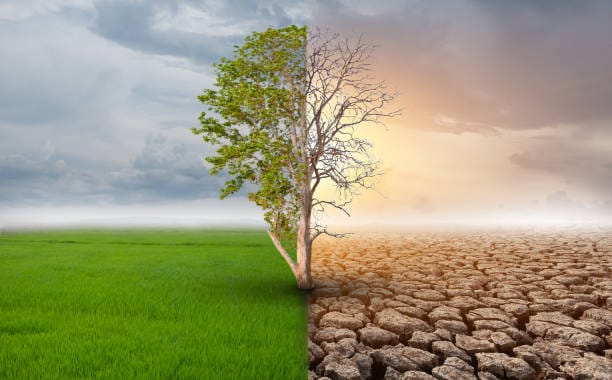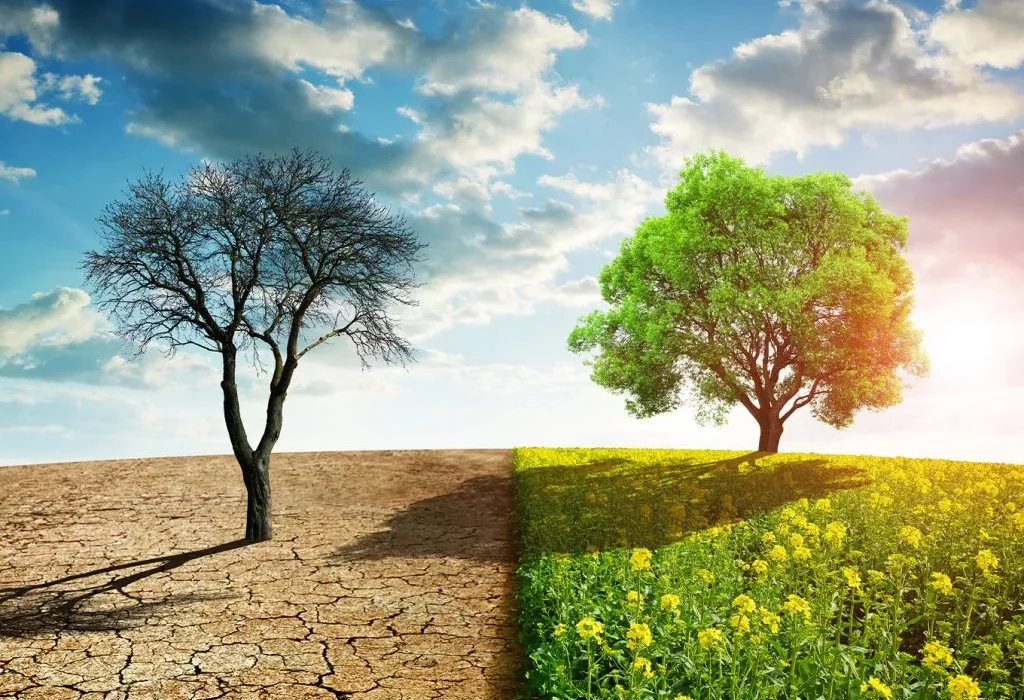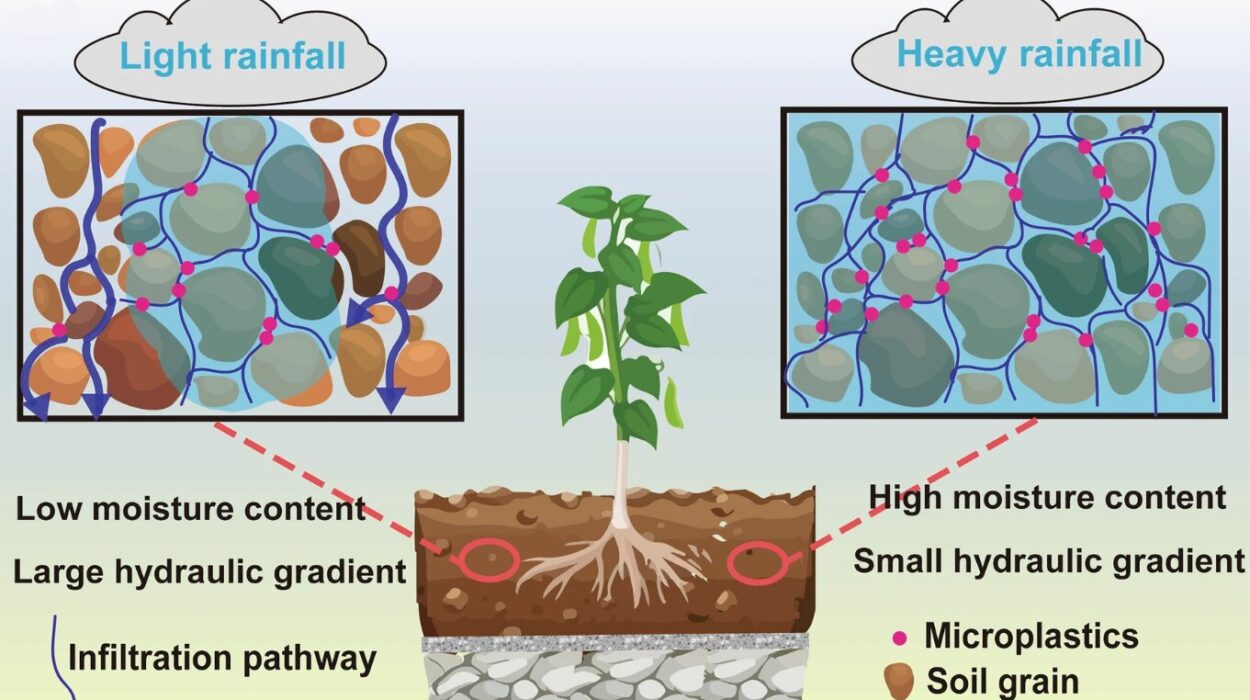As the world grapples with the ever-encroaching effects of climate change, one of the most insidious impacts is the increasing thirst of our atmosphere. This phenomenon, referred to as “evaporative demand,” is defined by scientists as the amount of water that could potentially evaporate from the Earth’s surface due to weather conditions. It’s a measure of how much moisture is being pulled from soil, plants, and bodies of water, and it plays a crucial role in agriculture and water resource management. As the planet continues to warm, the atmosphere becomes thirstier, and a new and alarming trend is emerging: thirstwaves.
A thirstwave is an event characterized by an exceptionally high evaporative demand that, much like its cousin the heatwave, can have disastrous effects on the environment, especially on crops. Defined as periods where the Standardized Short-Crop Evapotranspiration (ETos) exceeds the 90th percentile for at least three days, thirstwaves represent extreme bursts of atmospheric thirst that can wreak havoc on a growing season, stress water resources, and challenge agricultural resilience.
What Are Thirstwaves?
The concept of thirstwaves, introduced by scientists M. S. Kukal and M. Hobbins, represents a critical expansion of how we understand climate extremes. ETos is a metric used to estimate how much water would evaporate from a well-watered grass surface under varying atmospheric conditions, such as temperature, humidity, solar radiation, and wind speed. It’s an important measure because it reflects the evaporative demand that agricultural crops face during their growing season.
While previous studies have examined the rise in ETos over time, most of the focus has been on general trends rather than extreme events. However, with the climate crisis accelerating, it’s becoming increasingly clear that these extreme bursts of thirst, or thirstwaves, are posing new challenges that cannot be ignored. Kukal and Hobbins set out to define and study these events in depth, exploring their frequency, duration, and intensity across the United States.
Thirstwaves in the United States: A Growing Crisis
The study by Kukal and Hobbins, published in the journal Earth’s Future, focused on the growing seasons between 1981 and 2021 in the contiguous United States. By analyzing ETos data at the county level, the researchers were able to track the intensity, duration, and frequency of thirstwaves across nine major regions in the U.S. Their findings paint a concerning picture: thirstwaves are on the rise, with far-reaching implications for agriculture, water resources, and the broader environment.
The research revealed that, on average, the U.S. experiences 2.9 thirstwaves per growing season, with each event lasting about 4 days. While the duration can vary, the longest thirstwave recorded in the study lasted 17 days, and the frequency can be as high as 20 events per growing season. This is not a mere anomaly—it’s a new normal. In fact, many regions, once considered less susceptible to such extremes, are now experiencing these events with alarming regularity.
Regional Impacts of Thirstwaves
The study also highlighted the uneven geographical distribution of thirstwaves across the U.S. The High Plains emerged as the region most affected by the most intense thirstwaves, with the highest levels of evaporative demand. The South, Upper Midwest, Pacific Northwest, and West Coast were found to experience the longest duration of thirstwaves, averaging around 4.5 days. Interestingly, the West Coast and South also saw the highest frequency, with regions experiencing nearly 3.5 events per season.
One of the most concerning aspects of the study was the geographic spread of thirstwaves. Regions such as the Southwest, Northern Plains, and Northern Rockies, which might have been less affected in previous decades, are now increasingly susceptible to these extreme events. Areas that were once shielded from the worst impacts of evaporative demand are now feeling the brunt of thirstwaves, indicating a shift in climate patterns.
Moreover, the likelihood that any given region will escape a thirstwave altogether is diminishing. The study suggests that the number of regions that experience no thirstwaves during a given growing season is decreasing, pointing to a broader trend in which these extreme events are becoming more pervasive.
The Agricultural and Water Resource Implications
For agricultural regions, the rise of thirstwaves poses a direct threat to crop yields and water availability. High evaporative demand can lead to faster soil moisture depletion, especially during periods of limited rainfall. Crops—particularly those that rely on consistent moisture levels—are highly vulnerable to these extreme conditions. The study’s findings underscore the need for adaptive strategies in crop management, including the use of drought-resistant varieties, irrigation systems that optimize water use, and soil management practices that enhance water retention.
For water resource management, thirstwaves are equally problematic. In many areas, water supplies are already under stress due to rising temperatures and increased demand. Thirstwaves exacerbate this by pulling even more moisture out of the soil and water systems, making it harder to maintain sustainable water levels for both agriculture and drinking. In regions already facing water scarcity, the increase in thirstwaves could have far-reaching consequences for both local communities and entire ecosystems.
The Role of Climate Change in Amplifying Thirstwaves
As the climate continues to warm, the atmospheric thirst is only expected to increase, making thirstwaves a more frequent and intense phenomenon. The Intergovernmental Panel on Climate Change (IPCC) has warned that global warming will continue to drive shifts in weather patterns, leading to more frequent extreme events such as droughts, heatwaves, and intense evaporative demand periods.
The science behind these trends is rooted in basic atmospheric physics: as temperatures rise, the air can hold more moisture. This means that the atmosphere is able to pull more water from the Earth’s surface. Additionally, changes in wind patterns and solar radiation due to a warming climate may amplify the effects of evaporative demand, leading to more frequent and intense thirstwaves.
This creates a feedback loop, where higher temperatures lead to greater evaporative demand, which in turn dries out soils and exacerbates the impacts of heatwaves and droughts. These conditions can stress crops and ecosystems, reducing agricultural productivity and threatening water supplies in affected regions.
The Importance of Monitoring and Preparing for Thirstwaves
The findings from Kukal and Hobbins emphasize the need for greater monitoring and understanding of thirstwaves as part of broader climate adaptation strategies. While the phenomenon of thirstwaves is still relatively new, it is clear that tracking and predicting these extreme events will be crucial for managing water resources, optimizing crop production, and protecting ecosystems in the years to come.
Farmers, policymakers, and scientists must collaborate to develop adaptive strategies that can mitigate the effects of thirstwaves. These strategies might include improving water storage and distribution systems, developing crop varieties that are more resistant to drought, and enhancing soil management techniques to retain moisture more effectively. Additionally, early warning systems for extreme evaporative demand could help farmers make informed decisions about irrigation and crop management before the worst impacts are felt.
Conclusion: The Need for Action in a Warming World
As the atmosphere grows thirstier, the emerging threat of thirstwaves represents a new challenge for agriculture, water management, and climate resilience. These extreme events are already having significant impacts on crop yields, water availability, and the broader environment. As the climate continues to warm, thirstwaves are likely to become a more frequent and intense occurrence, exacerbating existing environmental stresses and adding new layers of complexity to global food security and water resource management.
The research by M. S. Kukal and M. Hobbins serves as a critical reminder of the urgent need to monitor and address the consequences of rising evaporative demand. By understanding the patterns and trends of thirstwaves, we can better prepare for the challenges ahead and implement effective strategies to mitigate their effects. As we confront the realities of a warming planet, it is crucial that we continue to adapt, innovate, and collaborate to safeguard our agricultural systems, water resources, and the ecosystems that sustain us all.
Reference: M. S. Kukal et al, Thirstwaves: Prolonged Periods of Agricultural Exposure to Extreme Atmospheric Evaporative Demand for Water, Earth’s Future (2025). DOI: 10.1029/2024EF004870






